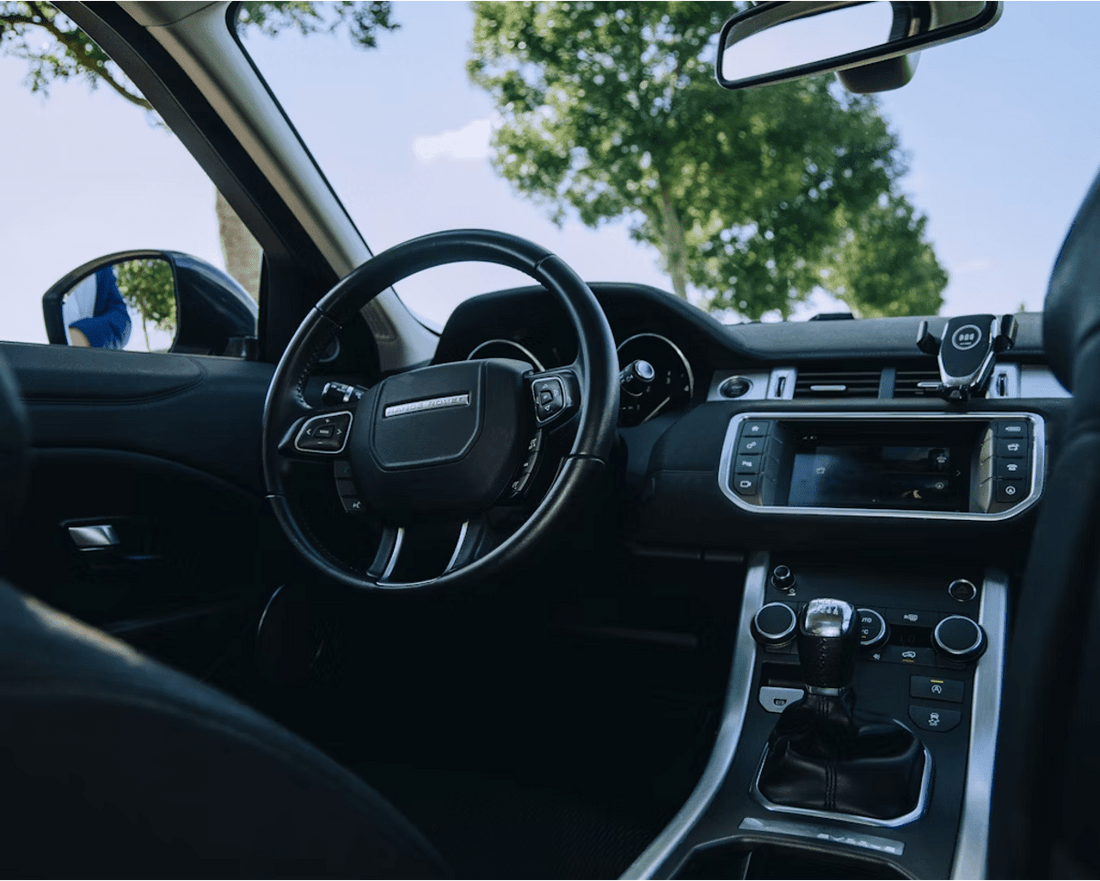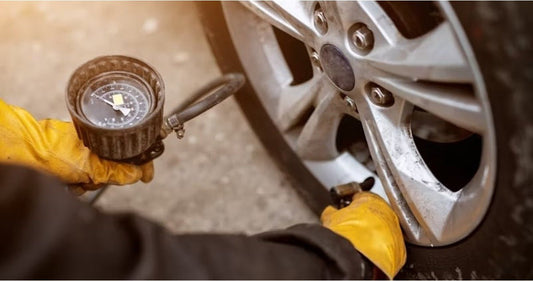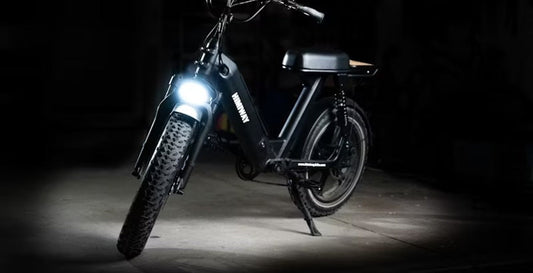Key Takeaways
- Wet dry vacuums work for everyday car cleaning and cost less, while extractors deep-clean fabrics and remove tough stains.
- Extractors remove 60%–80% more water than wet dry vacuums from car seats.
- Choose the tools based on your needs—wet dry vacuums for general cleaning, extractors for deep fabric work.
- Wet dry vacuums cost £50–£300 while extractors start at £300–£1000.
- Ordiniq's Handheld Wired Car Vacuum offers wet/dry capability that’s perfect for quick car cleanups at an affordable price.
Understanding Both Cleaning Tools
What's a Wet Dry Vacuum?
A wet dry vacuum (shop vac) is a powerful vacuum that handles dry dirt and liquid spills. Unlike home vacuums, these have strong motors, special filters, and tanks that hold liquids without breaking. They suck up dirt, debris, and liquids into a collection tank.
Wet dry vacuums work with one motor creating suction through an intake. Collected stuff passes through filters that separate air from debris before going into the tank. These excel at quick cleanups and switch easily between dirt and spills with a filter change.
Basic wet dry vacuum facts:
- Single suction system
- Collects solids and liquids
- Simple operation
- Various attachments included
- Manual tank emptying
How Extractors Work Differently
Extractors work more complex than wet dry vacuums. They don't just vacuum, they actively clean through multiple steps. An extractor sprays cleaning solution on surfaces, scrubs to loosen dirt, then vacuums up the dirty solution.
The key difference is extraction—these machines have two motors. One powers the spray system, another drives the vacuum. This dual action delivers a cleaning solution deep into fabrics while removing moisture and dirt. The result is a much deeper cleaning that removes embedded dirt, not just surface stuff.
Core Technology Differences
The main difference is their cleaning approach. Wet dry vacuums mainly remove existing moisture and debris through suction. They collect what's already loose or liquid but don't actively "clean" surfaces. Think recovery tools, not deep cleaners.
Extractors use a wash-and-recover approach. They inject solution into materials, scrub to loosen dirt, then extract solution and dirt together. This makes them great for fabric surfaces like seats, carpets, and floor mats where dirt gets stuck in fibres.
Technically, extractors have more parts like solution tanks, heaters (in hot water models), pressure pumps, and special vacuum heads for maximum moisture removal. These extras cost more but enable much better cleaning of soft surfaces.
|
Ordiniq Handheld Car Vacuum: Drive Clean, Drive Fresh Join 10,000+ Drivers Who Keep Their Cars Spotless Why Ordiniq’s Vacuum Is Essential
What Customers Say ★★★★★"I keep this light weight vacuum cleaner in our car and handy to clean the mess created by little one. The size is small but powerful enough to clean the car seat. It also has accessories to allow to clean the small gap and corner. Definitely will buy another piece for another car. Good value too." - Connie Try It Risk-Free for 30 Days Experience spotless car interiors with zero worries. If it doesn't transform your daily commute within 30 days, we'll refund your purchase—no questions asked. FREE BONUSES: 1-Year Extended Warranty + FREE Shipping Get Ordiniq's Handheld Wired Car Vacuum Cleaner Today! *Ordiniq also offers AutoPump and a Tyre Repair Kit —great extras to keep in your boot for added peace of mind. |
Power & Performance Comparison
When comparing wet dry vacuum and extractor, performance numbers help you decide. They clean through different methods, giving each tool advantages for different jobs.
Suction Power
Wet dry vacuums offer impressive raw suction, measured in CFM (cubic feet per minute). Good shop vacs have 60–150 CFM, which can quickly pick up big debris and surface water. It’s perfect for initial car interior cleanup with large spills or dirt buildup.
Extractors balance suction with solution delivery by offering 40–100 CFM. There’s lower airflow but special vacuum heads clean porous surfaces better. Focused suction plus special tools often clean fabrics better despite lower CFM ratings.
Water Removal Ability
Water lift (measured in inches) shows how well machines remove moisture. Extractors beat wet dry vacuums big time here. Pro extractors achieve 130–150 inches water lift versus 80–100 inches for wet dry vacuums. That 60–80% improvement means much drier surfaces after cleaning.
Extractors remove moisture better through special vacuum heads creating focused suction on fabrics. Many heads have multiple vacuum slots maximising surface contact for thorough moisture extraction. This is important for car upholstery where leftover moisture causes mould and smells.
Deep Cleaning Different Surfaces
For hard surfaces like vinyl, plastic, and leather, both tools clean fine with proper solutions. Wet dry vacuums excel at removing loose debris and surface dirt, making them perfect for regular maintenance. Their simple operation means quick routine cleaning.
For fabric seats, carpets, and floor mats, extractors win clearly. By injecting solution deep into fibres, scrubbing dirt loose, and removing everything, extractors achieve cleaner surfaces.
Handling Tough Stains
Fresh spills and surface messes? Wet dry vacuums provide enough cleanup power by quickly removing liquids before soaking into upholstery. The wide nozzles and strong suction handle visible messes fast.
Once stains set or liquids penetrate fabrics, extractors become essential. Combining solution application, scrubbing, and extraction breaks down stains and removes dissolved dirt. This makes extractors best for coffee spills, pet accidents, food stains, and other tough marks that seep into upholstery.
Wet Dry Vacuum Benefits
Despite extractors' deep-cleaning power, wet dry vacuums remain essential for many detailers. Their specific advantages make them necessary for certain car maintenance.
1. Multiple Use Versatility
Wet dry vacuums excel at versatility. The same machine cleaning your car also tackles workshop messes, garage spills, pet hair, and house cleaning. This multi-use value appeals to hobbyist detailers needing cleanup beyond just cars.
Most include various attachments for different surfaces. Crevice tools reach between seats and consoles. Brush attachments handle carpets. Wide nozzles clean large areas fast. This adaptability lets one tool address nearly every wet or dry car cleaning need.
2. Better Prices
Entry-level wet dry vacuums start around £50– £75, making them accessible for casual detailers. Even professional models rarely exceed £300. Compare that to extractors starting at £300 minimum, the affordability lets beginners build their tool collection without huge investment.
3. Easy Storage
Wet dry vacuums have compact designs when compared to extractors, making them easier to store in small garages. Many offer wall mounting or stackable parts to minimise space too. Their all-in-one design eliminates separate solution tanks and hoses extractors need, creating a manageable package for home detailers.
4. Simple Maintenance
Straightforward design means simple maintenance. Most need only basic filter cleaning, occasional tank emptying, minimal part replacement. This lower maintenance appeals to casual detailers who want to avoid complex equipment hassle.
No solution pumps, heaters, or multiple motors means fewer failure points and easier troubleshooting. Many parts can be user-replaced without special tools or knowledge, extending machine life with minimal cost.
Benefits of Extractors
While wet dry vacuums offer versatility, professional detailers often pick extractors for specific cleaning challenges.
1. Superior Fabric Deep Cleaning
Pros depend on extractors for unmatched fabric cleaning ability. The injection-extraction process penetrates deep to remove dirt that simple vacuuming leaves behind. It’s important for fabric seats where oils, sweat, and food particles embed over time. Extractors restore fabrics to near-original condition after years of use.
2. Better Smell Removal
Flushing out smell-causing bacteria from deep within fabrics (sometimes using hot water), extractors address odour sources rather than masking them. It’s invaluable for persistent problems like smoke, pet smells, and food odours in upholstery.
3. Stubborn Stain Removal
Combining solution application, scrubbing, and powerful extraction breaks down and removes stubborn stains resisting other methods. Coffee, soda, mud, even oil stains in carpets respond much better to extractor treatment than surface cleaning alone.
4. Faster Drying
Despite using water, extractors often result in faster drying than wet cleaning with shop vacs. Pro extractors remove about 90% of moisture introduced, leaving surfaces just damp. Good extractors reduce drying to 2–4 hours versus 8–12 hours when cleaning with soap/water then shop vac removal.
5. Better Solution Application
Extractors deliver solutions under pressure for even distribution and better fabric penetration. Controlled application prevents over-saturation while providing thorough cleaning. Many pro models offer heated solutions to enhance the cleaning agent’s effectiveness by activating chemicals and improving oil/soil breakdown.
Cost Comparison
Price Ranges
Wet dry vacuums are typically more affordable, with quality consumer models ranging from £100–£150 and professional units priced between £200–£300. These prices attract entry-level detailers building equipment collections.
Extractors require a larger investment, with basic models costing £300–£500 and professional equipment ranging from £800–£1000. The higher prices reflect complex machinery, extra motors, heaters, and specialised components for pro-level cleaning.
DIY vs Professional Equipment
Both categories offer consumer and professional options with big performance differences. Consumer wet dry vacuums provide adequate occasional use performance but might lack power and durability for regular or intense detailing. Similarly, budget extractors offer basic function but can't match pro equipment cleaning power or longevity.
Choose your tool based on usage patterns. Weekend detailers on personal vehicles achieve good results with mid-range equipment. Those detailing professionally or maintaining show cars benefit from higher-end tools designed for daily use and superior performance.
Comparison Table: Wet Dry Vacuum vs Extractor
|
Feature |
Wet Dry Vacuum |
Extractor |
|
Price Range |
£50–£300 |
£300–£1000 |
|
How It Works |
Single motor creates suction to collect debris and liquids |
Dual motors spray solution, scrub, then extract dirty water |
|
Suction Power (CFM) |
60–150 CFM |
40–100 CFM |
|
Water Lift |
80–100 inches |
130–150 inches |
|
Water Removal |
Basic removal |
60%–80% better water extraction |
|
Best For |
Surface cleaning, spills, loose debris |
Deep fabric cleaning, set stains, odours |
|
Drying Time |
8–12 hours |
2–4 hours |
|
Maintenance |
Simple - filter cleaning, tank emptying |
Complex - pumps, heaters, multiple parts |
|
Storage Space |
Compact, wall-mountable |
Larger, needs more room |
|
Versatility |
Multi-purpose (car, garage, house) |
Specialised for fabric/carpet cleaning |
|
Setup Time |
Quick - plug and go |
Longer - fill tanks, prepare solutions |
|
Running Costs |
Low - no solutions needed |
Higher - cleaning solutions required |
|
Learning Curve |
Easy for beginners |
Requires some technique |
|
Ideal User |
DIY car owners, weekend detailers |
Professional detailers, deep cleaning needs |
Which Tool for Which Job?
Best Wet Dry Vacuum Uses
Wet dry vacuums excel for initial cleaning removing loose debris, dirt, surface dirt before deeper cleaning. Powerful suction quickly handles sand, gravel, leaves accumulating on floor mats and carpets.
These versatile tools shine with unexpected liquid spills needing immediate attention. Quick switching between wet and dry pickup makes them invaluable for coffee spills, water bottles tipping, or rain entering vehicles. Larger tank capacity means fewer emptying interruptions during major cleanups.
When You Need an Extractor
Extractors become essential for deeply soiled fabrics, set stains, or persistent odours resisting surface cleaning. It’s particularly valuable for light-coloured interiors where stains show, or when previous owners left years of oils and dirt. Deep-cleaning often restores fabrics appearing permanently stained.
*Note: Pricing and/or product availability mentioned in this post are subject to change. Please check the retailer's website for current pricing and stock information before making a purchase.
Keep Your Car Clean the Smart Way with Ordiniq
Over 10,000 UK drivers trust Ordiniq for practical car care solutions.
For most UK drivers doing regular maintenance, a quality vacuum handles everyday cleaning perfectly. That's where Ordiniq's Handheld Wired Car Vacuum shines.
- Powerful suction tackles wet and dry messes.
- Multiple attachments clean every surface.
- Wired operation means consistent power without battery worries.
The compact design stores easily in your boot or garage. At a fraction of professional equipment cost, it delivers the cleaning power most drivers actually need. Save the expensive extractors for annual deep cleans while Ordiniq handles weekly maintenance.
Why spend hundreds on equipment you'll rarely use when affordable quality handles your real cleaning needs?
| Ready to simplify your car cleaning? Get your Handheld Wired Car Vacuum! |
Frequently Asked Questions (FAQ)
Can I use a regular household vacuum for car detailing instead?
Household vacuums remove surface dust but aren't made for serious car detailing. Most lack suction for embedded dirt, can't handle wet messes, don't offer specialised car attachments. Their filters are also not designed for fine car dust and debris, potentially damaging motors. For serious detailing, a dedicated wet dry vacuum or extractor works much better.
How often should I deep clean my car's upholstery with an extractor?
Daily drivers benefit from extraction cleaning every 3–4 months maintaining excellent upholstery condition. But adjust the frequency based on use; vehicles with kids, pets, or dusty environments might need monthly extraction. Show cars with limited use might need only annual deep cleaning. Regular vacuuming between extractions extends freshness removing surface dirt before deep penetration.
Do I need special cleaning solutions for car extractors?
Yes, right cleaning solutions significantly impact extractor results. Automotive formulations are safe on vehicle upholstery while effectively breaking down car soils. They include fabric protectants preventing future staining. Never use dish soap or household cleaners because they can create excessive foam, damaging vacuum motors and leave dirt-attracting residues.
How does Ordiniq's Handheld Wired Car Vacuum compare for car detailing?
Ordiniq's Handheld Wired Car Vacuum has high-power suction to handle both wet spills and dry debris, making it perfect for weekly cleanups preventing dirt buildup. The multiple attachments reach every car corner and crevice too.
At a fraction of an extractor cost, it's ideal for regular maintenance between professional deep cleans. Many UK drivers find it handles 90% of their car cleaning needs without the complexity or cost of specialised equipment.




